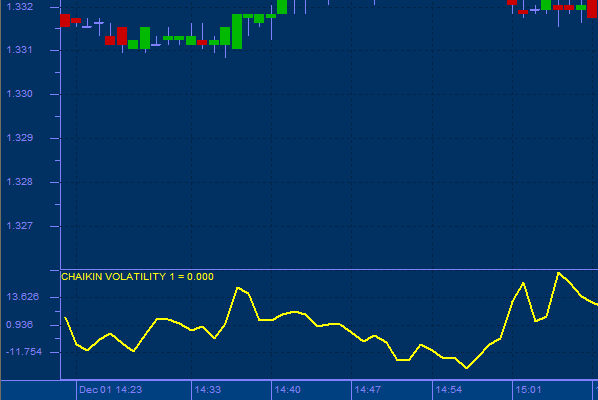
The Chaikin Volatility Indicator represents the difference between periodic high and low prices. Increases in the indicator reflect increased volatility in the price, which potentially signals the end of a price trend. The indicator will peak when the price reaches a new high or a new low.
The Chaikin Volatility Indicator is constructed as the difference between a moving average of high-low price range for current period versus the high-low moving average n periods ago. The indicator requires two input fields: the moving average period (first input) and the period over which the moving average difference will be calculated (second input).
Usage:
It measures volatility as the trading range between high and low for each period. There are two ways to interpret this measure of volatility.
One method assumes that market tops are generally accompanied by increased volatility and that the latter stages of a market bottom are generally accompanied by decreased volatility.
Another method assumes that an increase in the Volatility indicator over a relatively short time period indicates that a bottom is near (e.g., a panic sell-off) and that a decrease in volatility over a longer time period indicates an approaching top (e.g., a mature bull market).

